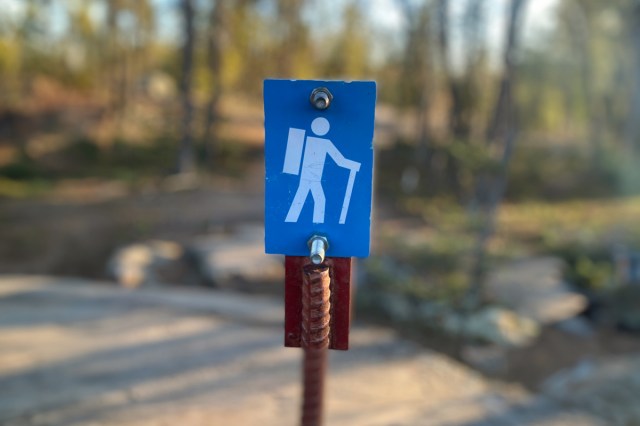Have you taken enough steps today? It’s hard to know just how much you’re moving without the help of a smartwatch, fitness tracker, or old-school pedometer. But even with one of those strapped to your wrist, hitting a certain milestone might look different for you than your workout partner… especially if you’re taller or shorter than average. That’s because the number of steps it takes to reach just one mile is based on the size of your steps — here’s how you can calculate it to accurately log mile after mile and crush your daily walking goal.

How Many Miles Should You Walk in a Day?
Most fitness trackers default to 10,000 steps per day, which is roughly five miles, although this suggestion isn’t necessarily backed by science. Turns out the 10,000-step recommendation comes from a 60-year-old marketing gimmick for Manpo-kei, a Japanese pedometer with a name that translates to “10,000 steps meter.” This early step counter has left its footprint on generations of following fitness trackers, which tend to use the same number. However, many researchers believe it isn’t necessary to clock five miles per day, considering some studies show that 7,500 daily steps (about 3.75 miles) is likely sufficient. Still, many doctors and even the CDC say aiming for 10,000 steps is a healthy goal.

Why Step Length Matters
How easy or tedious it feels to reach that five-mile goal has a lot to do with the size of your steps. Fitness gurus typically average 2,000 steps to a mile, though there’s a lot of individual factors at play that can throw off this number — like height, flexibility, and joint range of motion. Height matters the most, since taller people tend to take longer strides, while shorter people have smaller stride lengths. This means it takes fewer steps for taller athletes to reach 1 mile, and more for those on the shorter side.
Many smartwatches and fitness trackers can calculate your step length, though you don’t need a smart device to figure it out. Finding your own stride length takes a few minutes and only requires a measuring tape and calculator:
Mark out a distance of 30 feet on a flat, dry surface.
Take a few steps back from the first marker, and begin walking toward it normally.
Begin counting the number of steps you take once you reach the first marker, and stop counting when you hit the second.
To find your step length, you’ll divide the distance (in this case, 30 feet) by the number of steps you took.

The Trick to Calculating Your Steps Per Mile
With your step length in hand, you can now calculate how many steps are needed to reach one mile and beyond. Simply divide the distance of a mile (5,280 feet) by your step length to get the number of steps you’ll need to mark one mile. And if you’re really hoping to reach that five-mile goal, just multiply by five to get your day’s total step needs.
Reader Favorites

Counting Your Steps Adds Up
While you don’t need a fitness tracker or smartwatch to log your steps and movements, many doctors recommend them for various health benefits. Using a tracker consistently can help you hone in on better exercise habits; many people overestimate just how much they move in a day, and these tools can give you honest feedback about areas to improve upon. Over time, all that extra movement can add up in big ways, like improving your heart health, keeping conditions like diabetes and high blood pressure in check, and even helping you get more restful sleep at night.
Don’t know where to start? Consider the Fitbit Versa 3, which delivers a daily score to your wrist and tracks all your activity. If you’re willing to shell out a bit more, the Apple Watch earns high marks for its health-related functions, which go beyond standard activity tracker functions to monitor your heart rate automatically, track your sleep, and even alert you if you’re having a serious medical event. It’s serious peace of mind. If you don’t want all the bells and whistles (and the price tag), opt for a Realalt 3dTriSport Pedometer, which does just what the name suggests so you can track your walks, runs, and bike rides effortlessly.
More From Our Network
Better Report is part of Inbox Studio, which publishes content that uplifts, informs, and inspires.

















